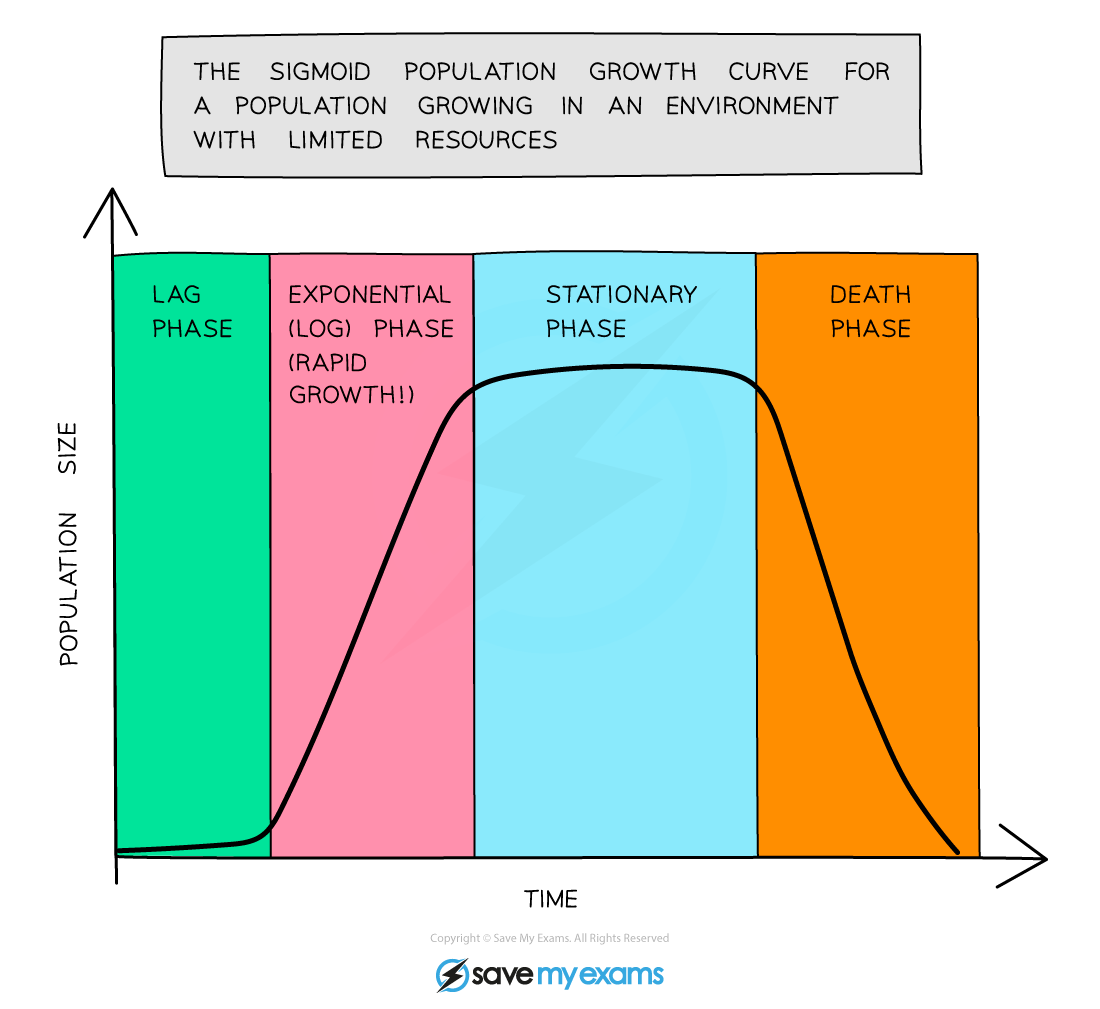- 翰林提供学术活动、国际课程、科研项目一站式留学背景提升服务!
- 400 888 0080
CIE IGCSE Biology: 复习笔记:19.1.6 Populations
CIE IGCSE Biology: 复习笔记:19.1.6 Populations
Definition of Population
- A population is defined as a group of organisms of one species, living in the same area at the same time
Other important definitions
- A community is defined as all of the populations of different species in an ecosystem
- An ecosystem is defined as a unit containing the community of organisms and their environment, interacting together (eg a decomposing log, a lake)
Population Growth
- All living organisms compete with each other for food, water and living space
- Those which are the best adapted to their environments generally increase their populations at the expense of those less well adapted
-
- Food supply
- Predation
- DiseasePopulation growth in most organisms is controlled by the following three factors:
The Population Growth Curve: Extended
- If the growth of microorganisms in a fermenter is measured over time, the population growth looks like the graph below
 A typical growth curve for a population in an enclosed environment
A typical growth curve for a population in an enclosed environment
- The shape of this curve ( a little like an ‘S’), gives it its name - a sigmoid growth curve
- The curve has four distinct phases:
- Lag phase - organisms are adapting to the environment before they are able to reproduce; in addition, at this stage there are very few organisms and so reproduction is not producing larger numbers of offspring
- Log phase (aka exponential phase) - food supply is abundant, birth rate is rapid and death rate is low; growth is exponential and only limited by the number of new individuals that can be produced
- Stationary phase - population levels out due to a factor in the environment, such as a nutrient, becoming limited as it is not being replenished; birth rate and death rate are equal and will remain so until either the nutrient is replenished or becomes severely limited
- Death phase - population decreases as death rate is now greater than birth rate; this is usually because food supply is short or metabolic wastes produced by the population have built up to toxic levels
- Organisms in a natural environment are unlikely to show population growth like a sigmoid growth curve because they are affected by many other factors, including:
- changing temperature or light
- predators
- disease
- immigration (individuals moving into the area)
- emigration (individuals moving out of the area)
转载自savemyexams

在线登记
最新发布
翰林课程体验,退费流程快速投诉邮箱: yuxi@linstitute.net 沪ICP备2023009024号-1








